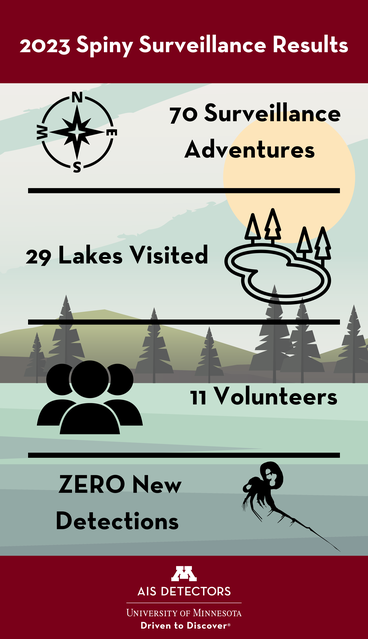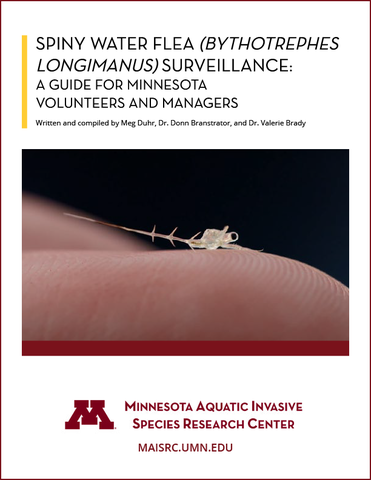Project Team: Megan Weber, Valerie Brady, Donn Branstrator

JANUARY 2024 UPDATE:
The results are in:
- 11 volunteers
- 29 lakes
- 70 searches
- ZERO NEW DETECTIONS
What: A MAISRC pilot project testing a citizen science approach for spiny water flea surveillance and early detection. We will provide local managers and volunteers with a simple protocol, including timing and equipment guidelines, aimed at optimizing spiny water flea detection in the field.
Why: The DNR’s infested waters database currently lists 66 Minnesota water bodies as infested with spiny water fleas, with only two infestations since 2016. Given what we know from previous MAISRC research projects on means of spread, detectability, and boater movement patterns, it is unlikely that spiny water fleas have not spread to any new lakes. Unfortunately, few entities in Minnesota conduct appropriately-timed surveillance monitoring to detect spiny water fleas and relying on anglers and residents to recognize and report this diminutive and little-known species is likely insufficient. A more complete picture of the extent of the spiny water flea invasion in Minnesota is essential if we are to make progress in slowing the spread.
How: MAISRC researchers and staff have developed a protocol suitable for local government managers, lake association members, and AIS Detectors. We will work with participants to coordinate the effort and ensure that they have the information and materials they need to participate. We will also work with managers to help prioritize lakes to survey using existing MAISRC modeling data. A user-friendly and DNR-approved process for reporting positive and negative findings will be shared with participants.
MAISRC will provide:
- equipment list, specifications (particularly for the plankton net), and potential vendors
- written and video instructions for conducting open water, vertical plankton tows
- guidelines for time of year/time of day to sample and where within a lake to sample
- spiny water flea field identification guide
- instructions for decontaminating and storing sampling equipment
- instructions for reporting positive and negative findings
- phone and email support during the field season
Participants will provide/contribute:
- sampling equipment (boat, plankton net, magnifying glass, flashlight, plastic tubs)
- sampling effort on at least one lake during the recommended time frame
- accurate records of sampling date, location, and effort even when no spiny water fleas are detected
- feedback on instructional materials and feasibility of methods for volunteers
Helpful Videos:
For more information, email [email protected]

